Deforestation is a global problem that contributes to climate change and desertification. A new law…
The post Europe’s New Zero-Tolerance Deforestation Law appeared first on Earth911.

Deforestation is a global problem that contributes to climate change and desertification. A new law…
The post Europe’s New Zero-Tolerance Deforestation Law appeared first on Earth911.
When flea season strikes, those nasty pests are out looking for a warm host to…
The post We Earthlings: Fight Fleas Naturally appeared first on Earth911.
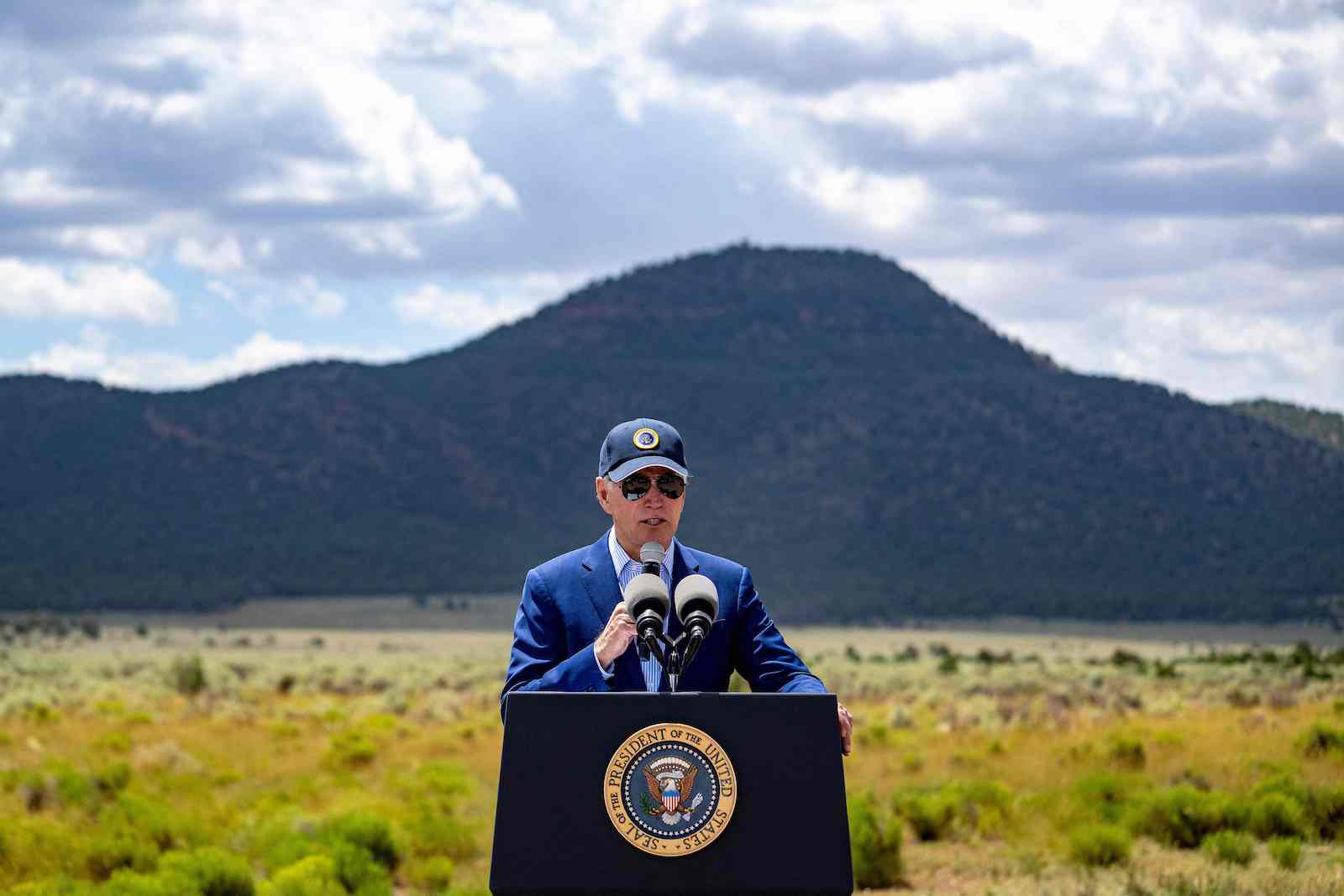
A recent campaign ad targeting West Virginia Senator Joe Manchin shows the centrist Democrat standing alongside President Biden, applauding the passage of the Inflation Reduction Act. Ominous music plays as the words, attributed to Biden, “I guarantee you we’re going to end fossil fuel” splash across the screen. The spot, from a dark money group aligned with Republicans, paints Manchin as a flaming liberal happy to eliminate 100,000 West Virginia jobs in a ruthless pursuit of clean energy.
Manchin probably wouldn’t define himself as particularly liberal, nor would he consider himself an enemy of fossil fuels. The Mountain State’s senior senator has shown no reluctance to withhold votes on important legislation like the Build Back Better Act or demand concessions to support Democratic priorities like the Inflation Reduction Act. His ability to thwart President Biden’s agenda has given him, and Arizona Senator Kyrsten Sinema, outsize importance in Washington.
It’s in keeping with a path he’s walked throughout his political career, which included two stints as governor. Manchin embraces deep-blue labor interests and conservative business interests alike while beating his chest at environmental regulators, vowing to protect the state’s economy from those who would shut down Big Coal. He’s observing the anniversary of the Inflation Reduction Act in a typically two-sided manner. On one hand, he celebrated the law’s extension of benefits for disabled coal miners and its reduction of medical costs for seniors. On the other, he promised an “unrelenting fight against the Biden Administration’s efforts to implement the IRA as a radical climate agenda instead of implementing the IRA that was passed into law.”
Manchin is keenly aware that his political adversaries want West Virginians to see him as a liberal, and that he cannot allow them to succeed. He finds himself under threat by West Virginia’s sitting governor, Jim Justice, a Republican who is running for the seat Manchin has held since 2010. Justice, the state’s richest man, made his fortune as a coal executive and one of the nation’s largest grain producers, though he’s probably more well known nationally as a culture war populist who has patterned himself after Donald Trump. He loves to rail against political correctness and “wokeism,” he’s promised to deliver the biggest state tax cut in history, and he’s mastered the art of using levity to cut down opponents. He has no qualms about bringing out Babydog, his media-friendly canine, and inviting critics to “kiss her hiney.”
“Anybody that would hold up a bulldog’s behind to the camera at the State of the State,” Justice has said, “absolutely will just about do anything.”
Though Justice’s candid demeanor and populism may give him some appeal with voters, his honesty in business dealings and his commitment to worker safety is deeply suspect. He’s been sued more than 600 times by the Justice Department, business partners, vendors, government agencies, and others for millions of dollars in unpaid taxes, fines, and loans. Environmental groups have come for Justice over and over again for safety violations throughout central Appalachia and problems at his unreclaimed mines, including repeated floods and landslides that have long plagued a community in Pike County, Kentucky. Over the past five years, regulators have cited Justice’s companies for 130 environmental and workplace safety violations, and ordered them to cease all activity until about $8 million in fines are paid. Justice has ignored them.
Manchin does not appear to consider Justice much of a threat. “Make no mistake,” he has boasted repeatedly (including in a statement to Grist). “I will win any race I enter.”

His confidence may prove unfounded. Machin’s popularity has waned as his once blue state has turned bright red. After winning three consecutive races by at least 30 percentage points, he squeaked through his latest by only 3 points. Worse, he’s polling poorly against Justice, whose approval rating is at 57 percent to Manchin’s 29 percent. Justice looks likely to beat his primary opponent, Alex Mooney, and challenge Manchin in 2024. The threat he poses to the seasoned Democrat underscores how the decline of coal and the rise of anti-environment, hardline Republicans has changed politics in West Virginia — and could reshape the last years of President Biden’s administration and the future of Democratic priorities.
“The West Virginia seat is Republicans’ best chance to flip a seat,” said political commentator Jessica Cook of The Cook Report. That could give the GOP a reasonable shot at a Senate majority, paving the way for more right-wing legislation, particularly in the climate arena.
A small but vocal contingent of West Virginia voters are outspoken in their frustration with this choice. They aren’t unaware of coal’s increasingly shaky future, or its impact on the climate. They feel trapped by what they see as a false dichotomy between candidates that regardless of party have kept the state in a holding pattern. The political movement WV Can’t Wait, which recruits and trains progressive-leaning candidates in hopes of turning West Virginia leftward, says many voters feel disempowered and equally fed up with Democrats and Republicans whose concern for their interests is limited at best.
“In West Virginia, we know that politics isn’t Democrat v. Republican, it’s the Good Old Boys Club v. Everyone Else,” the organization said in a statement to Grist. “In West Virginia, we know that the fight isn’t pro-Coal versus anti-Coal, it’s Coal Company versus Coal Miner.”
Mariah Clay, a young environmental activist from the coalfields community of Mingo County, calls the likelihood of a Manchin-Justice race “a slap in the face.” The way she sees it, the political power of both men stems from industries that have cost West Virginians their health and their safety.
“I’m sick and tired of it, having to choose the lesser of two evils,” she said. “Our land, and the well-being of our communities, are continuously sacrificed over and over and over again, for these cash cow projects that have nothing to do with us.”
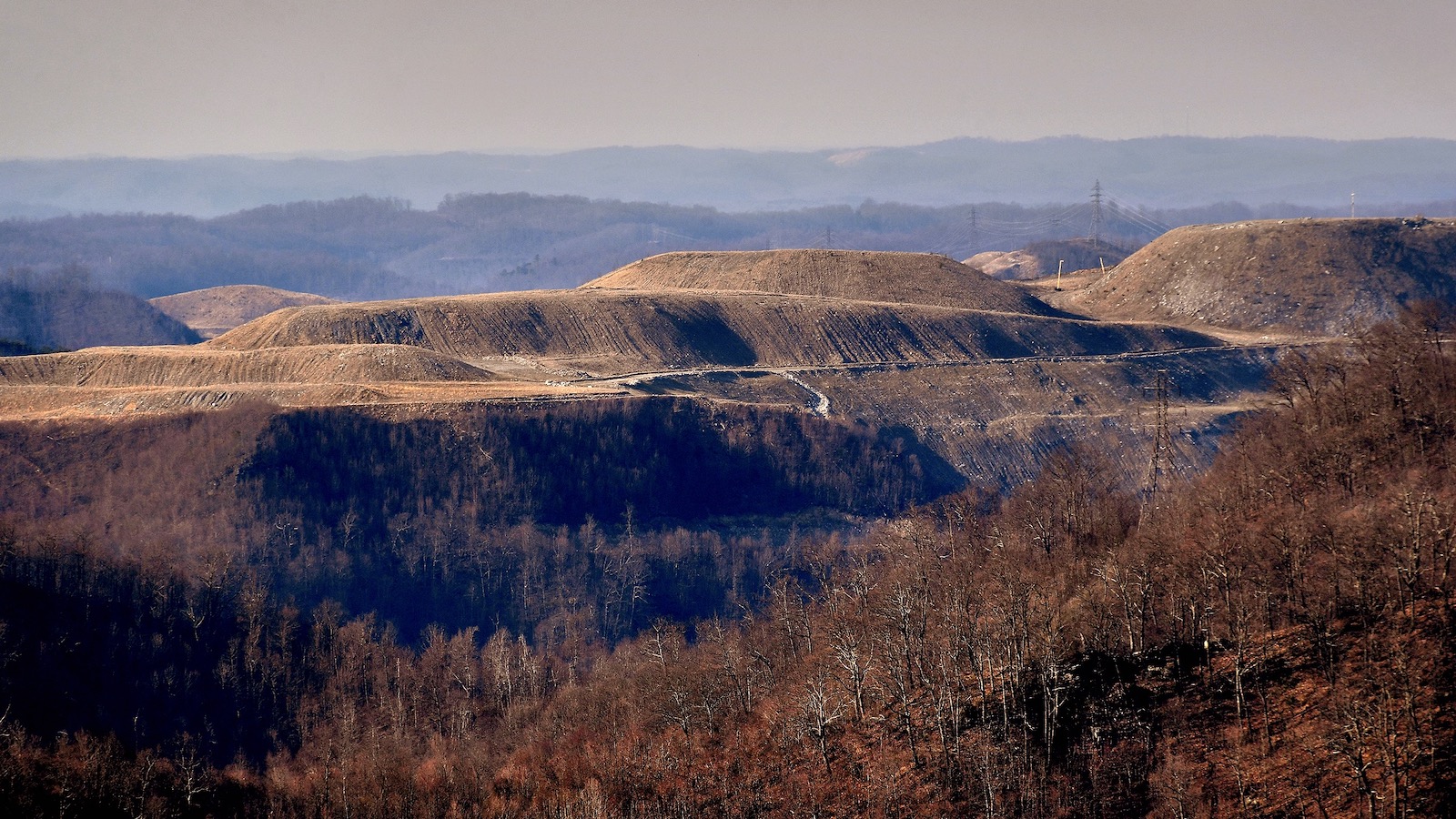
Like Justice, Manchin has amassed a fortune from coal. His family owns Enersystems, a company that sells a form of coal waste called gob that power plants burn for energy. His background has made him adept at walking the narrow bridge between playing nicely with miners while pleasing the industry they work for. Even as he took conservative stances on environmental regulations as governor, Manchin pushed for miners’ access to health care and a pension and allied with other Democrats to support measures that would prevent black lung, a deadly disease contracted through coal and silica dust exposure. But he also took the controversial step of privatizing the state workers’ comp system.
“Senator Manchin is probably the best example of someone who was able to sort of thread that needle, so to speak, about coal production,” West Virginia University historian Hal Gorby told Grist.
But the political environment in West Virginia that allowed him to do that has changed. Although the state has supported Republican presidential candidates since 2000, Democrats largely had a lock on the governorship and the statehouse from 1993 through 2015. It has since become a GOP stronghold. This shift followed the emergence, in the early 1990s, of its stronger, more patriotic party line on the state’s most famous export, one conveyed in a campaign called “Friends of Coal.” The fossil fuel became part and parcel with faith, freedom, and firearms. The movement, and the party, gained greater support during the Obama administration, an era the industry and its political allies called the “war on coal.”
Still, the industry has seen its fortunes wane. Mechanization increased production for a time while slashing jobs, reducing the number of coal miners in West Virginia to fewer than 12,000. Production peaked in 2008 and has steadily declined ever since — by as much as 64 percent in Appalachia alone — as states retire their coal-fired power plants. This trend is one of the biggest reasons for West Virginia’s rightward tilt. Though some miners and their communities have spoken out against the environmental damage the industry wreaks, others embraced the party that continues promising to keep the mines open.
“It’s sort of framed as like, We’re going to either have a clean environment, or we’re going to have this sort of vibrant economy that’s, you know, going to pollute,” Gorby said.
All the while, national Democrats showed little interest in maintaining their foothold in West Virginia, instead focusing on urban centers and suburban voters.
It is against this backdrop that Justice emerged. The irony is he won his first governorship, in 2016, as a Democrat. He switched parties seven months into his term (during an appearance with President Trump), telling voters, “I can’t help you anymore being a Democrat.” His administration has taken to following the party line, criminalizing protests against fossil fuels, passing strict anti-abortion laws, opposing gun control, and more.

Though his role as culture warrior draws comparisons to Trump (whom Justice recently endorsed), former Massey Energy chief executive Don Blankenship may be the better analogue. Blankenship, a major player in the Friends of Coal campaign who contributed mightily to many conservative, anti-environment West Virginia candidates, ran for the Senate in 2018. He failed to survive the primary, undone by widespread condemnation of the lax safety measures that contributed to a deadly explosion at a Massey Energy mine in 2010. An investigation found that “Massey Energy used the leverage of the jobs it provided to attempt to control West Virginia’s political system.”
And that, ultimately, may be the clearest reflection of West Virginia politics, an arena in which politicians of both parties must be mindful of the state’s flagship industry, even if its best days are behind it.
Though some voters consider Manchin the lesser evil, Clay and others see both men more or less as the same result of the disenfranchisement and disenchantment of West Virginia’s voters and the continuing power of the coal industry and coal propaganda. Commentators often scrutinize the state’s politics, asking why so many of its residents appear to vote against their own best interests, and they often consider its elections a curiosity confined to the Mountain State. But what happens there often has national implications. And while some people argue that progressivism lies in wait, little will come of that until Democrats develop a strategy to improve the day-to-day conditions of West Virginians’ lives.
If Manchin stays in office, any deals the Biden administration makes to win his vote will be tempered with concessions to the fossil fuel industry. If Justice wins, though, there will be no deals at all. Justice’s comment about the best response to COVID-19 is equally apt here: “You’re dadgummed if you do and dadgummed if you don’t.”
This story was originally published by Grist with the headline Joe Manchin could lose his pivotal Senate seat — to another coal baron on Aug 22, 2023.
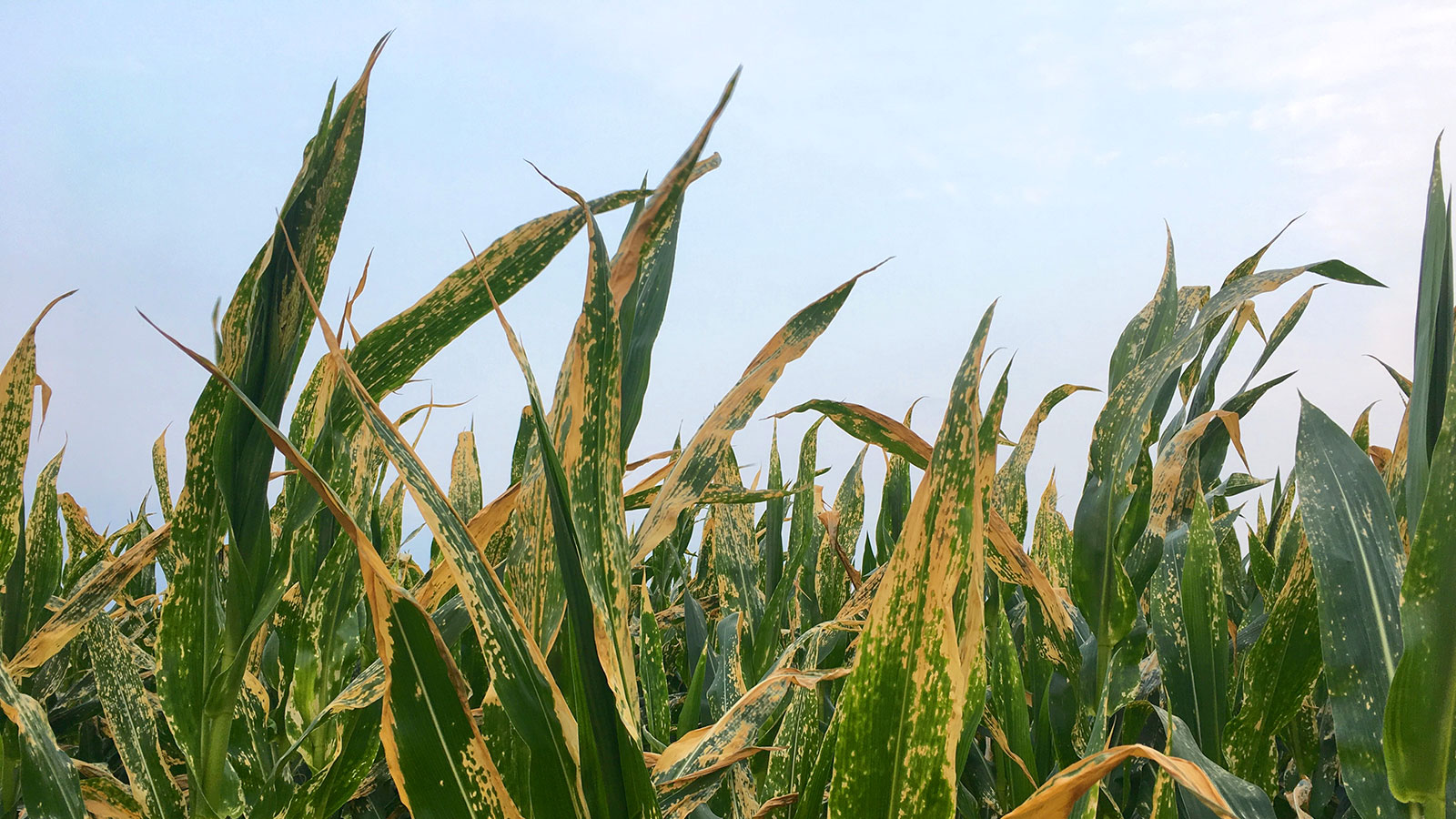
Nobody really knows how the fungus Bipolaris maydis got into the cornfields of the United States. But by summer of 1970, it was there with a vengeance, inflicting a disease called southern corn leaf blight, which causes stalks to wither and die. The South got hit first, then the disease spread through Tennessee and Kentucky before heading up into Illinois, Missouri, and Iowa — the heart of the Corn Belt.
The destruction was unprecedented. All told, the corn harvest of 1970 was reduced by about 15 percent. Collectively, farmers lost almost 700 bushels of corn that could have fed livestock and humans, at an economic cost of a billion dollars. More calories were lost than during Ireland’s Great Famine in the 1840s, when disease decimated potato fields.
Really, the problem with southern corn leaf blight started years before the 1970 outbreak, when scientists in the 1930s developed a strain of corn with a genetic quirk that made it a breeze for seed companies to crank out. Farmers liked the strain’s high yields. By the 1970s, that particular variety formed the genetic basis for up to 90 percent of the corn grown around the country, compared to the thousands of varieties farmers had grown previously.
That particular strain of corn — known as cms-T — proved highly susceptible to southern corn leaf blight. So, when an unusually warm, wet spring favored the fungus, it had an overabundance of corn plants to burn through.
At the time, scientists hoped a lesson had been learned.
“Never again should a major cultivated species be molded into such uniformity that it is so universally vulnerable to attack by a pathogen,” wrote plant pathologist Arnold John Ullstrup in a review of the matter published in 1972.
And yet, today, genetic uniformity is one of the main features of most large-scale agricultural systems, leading some scientists to warn that conditions are ripe for more major outbreaks of plant disease.

“I think we have all the conditions for a pandemic in agricultural systems to occur,” said agricologist Miguel Altieri, a professor emeritus from the University of California, Berkeley. Hunger and economic hardship would likely ensue.
Climate change adds to the danger — shifting weather patterns are on track to shake up the distributions of pathogens and bring them into contact with new plant species, potentially making crop disease much worse, said Brajesh Singh, an expert in soil science at Western Sydney University in Australia.
Incorporating biodiversity into large-scale farming could move agriculture away from this crisis. Here and there, some farmers are taking steps in this direction. But will their efforts become widespread — and what will happen if they don’t?
Farms cover close to 40 percent of the planet’s land, according to a 2019 report from the Intergovernmental Science-Policy Platform on Biodiversity and Ecosystem Services. Almost 50 percent of those systems are made up of just four crops: wheat, corn, rice, and soybeans. Disease is commonplace — globally, $30 billion worth of food is lost to pathogens every year.
Things were not always this way. As the 1900s dawned in the United States, for instance, food was produced by humans, not machines — more than 40 percent of the American workforce was employed on a multitude of small farms growing a wide range of crop varieties. The British Empire sparked the shift toward today’s industrialized food system, said historian Lizzie Collingham, who wrote the book Taste of War: World War II and the Battle for Food.
By the early 1900s, the British Empire had learned that it could “basically treat the whole planet as a resource for its population,” Collingham said. It acquired cocoa from West Africa, meat from Argentina, and sugar from the Caribbean, for example. Suddenly, food was not something to be bought from the farmer down the street, but a global commodity, subject to economies of scale.
America grabbed hold of this idea and ran with it, according to Collingham. First came the New Deal — President Roosevelt’s plan for pulling the country out of the Great Depression included raising the standard of living for farmers, partly by bringing electricity to rural life. In 1933, farm country was characterized by outhouses, iceboxes, and a complete lack of street lights. By 1945, all that had changed.
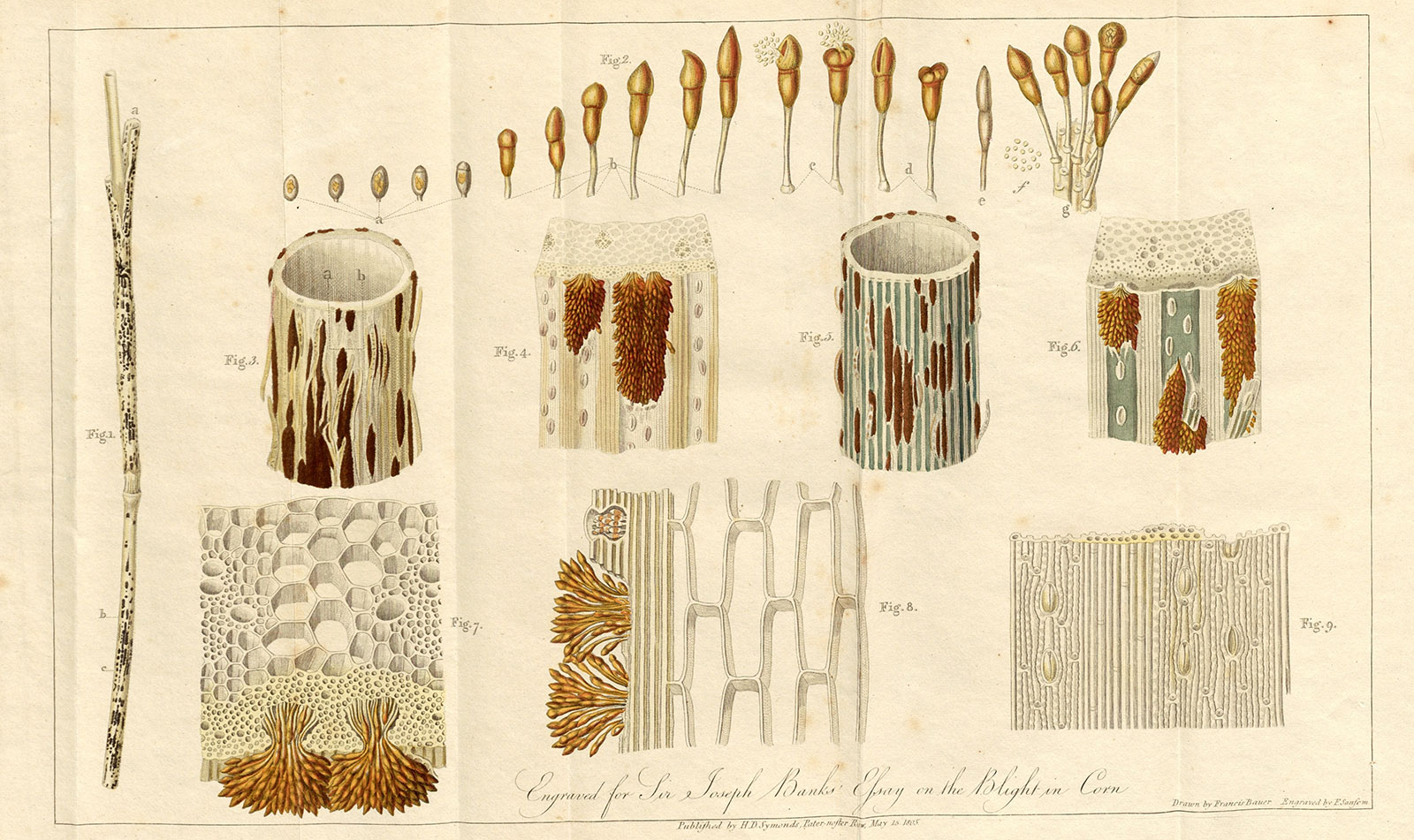
Once they were on the power grid, farmers could buy equipment such as electric milk coolers and feed grinders that let them scale up their operations, but such things are expensive — only by expanding could farmers afford them. “It all makes sense if you rationalize it for economies of scale and make your farm into a factory,” Collingham said.
Then World War II hit, and much of agriculture’s workforce had to go off to fight. At the same time, the government had an army to feed and the general public to keep happy, so it really needed to keep the food supply coming. Machines were the answer — the war era solidified the shift from humans to tractors. And machines do best when they only perform one job, like harvesting a single crop, acre after acre.
Monocultures can be very efficient when they’re not contracting diseases, and that efficiency is part of what got the United States through the war. In fact, the system worked so well that “soldiers doing their training in America got fatter,” Collingham said. “A lot of them had never eaten so well in their lives.”

Soon, small-scale farms growing diverse crops had largely retreated into the past in the Midwestern U.S. It’s not that anyone intended for the practice to be lost. It was simply “in many people’s minds, rendered obsolete,” said agronomist Matt Liebman, who recently retired from Iowa State University.
One might think the realization that biodiversity protects plant health is a new one, given that it wasn’t that long ago that biodiverse farming became a rare practice. But in fact, scientists and farmers have recognized this connection for at least centuries, and probably longer, said evolutionary biologist Amanda Gibson from the University of Virginia.
The basic concept is simple enough: A typical pathogen can only infect certain plant species. When that pathogen ends up on a species it can’t infect, that plant acts like a sinkhole. The pathogen can’t reproduce, so it’s neutralized, and nearby plants are spared.
Disease-resistant plants can also alter airflow in ways that keep plants dry and healthy and create physical barriers that block pathogen movement. Especially if they’re tall, resistant plants can act like fences that diseases have to hop over. “Somebody did a nice experiment taking dead corn stalks and just plopping them in the bean field,” said plant pathologist Gregory Gilbert from the University of California, Santa Cruz. “And that works, too, because it’s just keeping things from moving around.”
In nature, this dynamic between plants and pathogens can be part of healthy ecosystems. Pathogens spread easily between stands of the same species, killing off plants that are too close to their relatives and making sure landscapes have a healthy degree of biodiversity. As “social distancing” is restored between susceptible hosts, the disease dies down.
In monocultures, there are no sinkholes or natural fences to stem the spread of pathogens. Instead, when a disease takes hold in a crop field, it’s poised to burn through the entire thing. “We create amplification rather than dilution,” said Altieri.
New technology has driven home these old lessons: Over the last decade, it’s become possible for scientists to isolate a broad swath of the microbes found within a particular niche — like an ear of corn or a stalk of wheat — and use DNA sequencing to create a censuslike list of everything that lives there.
The results have been unsettling, but not always unexpected. Plants in cultivated lands carry a significantly larger variety of viruses than those in adjacent biodiversity hotspots, plant and microbial ecologist Carolyn Malmstrom from Michigan State University and her colleagues found in one study.
Conversely, they later found that some fields of barley and wheat were largely devoid of viruses, but that could also be a sign of problems to come. Pesticides may be keeping virus levels low: “So we might think, OK, yay, we’re protecting our crops,” Malmstrom said. But not all microbes are bad.

“By pulling our crop systems out into a virus-free situation, we may also be removing them from some of the richness of the biodiversity of microbes that’s beneficial,” she added.
The bigger the farm, the more serious the disease problems, at least in the case of a pathogen called Potato virus Y, which leads to low potato yields. When researchers looked at the amount of simplified cropland surrounding a potato plant, they found that the prevalence of the pathogen went up steadily as the percentage of surrounding area covered in cropland increased. Unmanaged fields and forests, on the other hand — carrying wild mixes of plants — seemed to have a protective effect.
In natural landscapes, increasing biodiversity lowers the number of virus species present. But increasing biodiversity along the edges of crop fields doesn’t seem to have the same effect, plant ecologist Hanna Susi from the University of Helsinki found.
Fertilizers and other chemicals leached from the crops might affect the susceptibility of nearby plants to infection, she and her coauthor postulated. Beneficial microbes found on wild plants may be keeping many of these viruses from causing disease, but if the same viruses get into crops that lack that protection, “We don’t know what may happen,” she said. Farmers could find themselves dealing with new kinds of crop diseases.
On Altieri’s farm in the Colombian state of Antioquia, he mixes many plants — corn with squash, pineapples with legumes — and said, “We don’t have the diseases that neighbors have, that have monocultures.”
The results of recent DNA-sequencing experiments are familiar to him because traditional Latin American farmers have long used biodiversity to protect their crops. “These papers are good ecological research,” he said. “But actually, they’re basically reinventing the wheel.”
This old wheel does have to get over a new hill, however. Climate change is redistributing pathogens, bringing them into contact with new crops, and changing weather patterns in ways that foster disease.
Already, Liebman has seen the effects of climate change firsthand in Iowa, where tar spot disease — an infection that kills the leaves on corn plants — is on the rise. “We have warmer nights and more humid days,” he said. The tar spot pathogen loves the new weather.
Predicting exactly how much climate change will increase crop disease is difficult, said Singh. But there are some general conclusions he can draw.
Rising temperatures will likely favor certain pathogens that cause disease in major crops. A wheat-infecting fungus called Fusarium culmorum, for example, is likely to be replaced by its more aggressive and heat-tolerant relative, Fusarium graminearum. That could spell bad news for Nordic countries, where wheat crops could suffer.
Hotter temperatures will likely knock back other pathogens. A fungus that infects the herb meadowsweet, for example, has already begun dying out on islands off the coast of Sweden. In general, however, Singh thinks regions that are currently cold or temperate will likely see increases in crop disease as they warm.
For regions that are already warm, rising humidity could cause trouble. For example, parts of Africa and South America are among the regions that will probably see increases in funguslike pathogens called Phytophthora. Food insecurity is already prevalent in some of these areas, and if nothing’s done to stop disease spread, that’s likely to get worse. “We need a lot more information,” Singh said. “But I agree that that is one of the scenarios that is a possibility.”
Jason Mauck farms “every which way,” in his words. The head of Constant Canopy Farm likes experimenting, seeing what works and what doesn’t. And on about 100 out of the 3,000 acres he tends to in Gaston, Indiana, one of his experiments involves a strategy called intercropping.
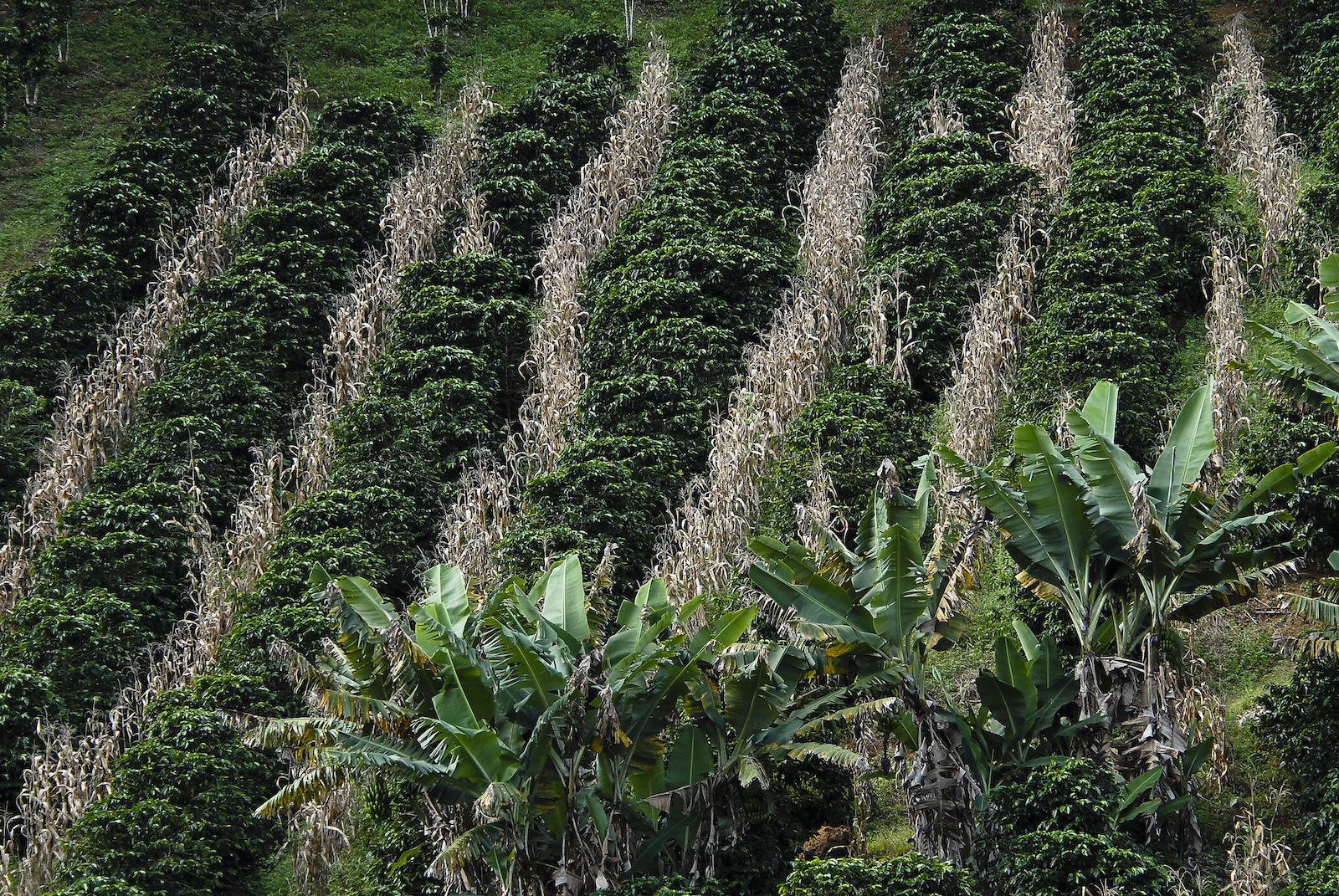
Intercropping means growing two or more crops in the same field, by alternating rows or mixing the crops within the same rows — it’s a modern reimagining of age-old techniques like those Altieri uses, and one way of introducing biodiversity into large-scale agriculture. In Mauck’s case, he’s planting wheat with soybeans. The wheat seeds go into the ground in October, and by February, the plants are poking up through the soil. Then in April, he adds soybeans between the rows. The two crops grow together until the harvest, right around July 1.
Unlike the wheat Mauck grows in a monoculture, he doesn’t spray the intercropped wheat with fungicides at all — they simply don’t need the help to stay healthy. The combination of crops likely encourages airflow that dries moisture and prevents fungus from growing, Mauck said. With climate change bringing more extreme storms to the region, he welcomes the help.
Mauck’s experiences are far from unique. When biologist Mark Boudreau from Penn State Brandywine reviewed 206 studies on intercropping across a wide variety of plants and pathogens, he found that disease was reduced in 73 percent of the studies.
In China, farmers have been experimenting with intercropping for decades, and it’s catching on in Europe and the Middle East, Boudreau said. But in the American Midwest, Mauck said intercropping makes him “kind of a weirdo.” He speaks at about 20 conventions every year to spread the word about this and other sustainable farming practices, plus he has a lively social media following. He’s convinced some of his fellow farmers to try intercropping, but progress is slow.
Lack of equipment is a big part of the problem, said extension agronomist Clair Keene from North Dakota State University. Farm equipment companies haven’t invented the machine that will let farmers harvest mixed crops separately, and farmers usually don’t have the time to do multiple harvests. That would be an easy enough problem for farm equipment companies to solve, Boudreau thinks, if farmers put a bit of pressure on them.
In North Dakota, the humble chickpea might just provide the motivation farmers and farm equipment companies need. In recent years, the profit margin on chickpeas has been two to three times that of spring wheat — a common crop for the region. But there’s a problem: Chickpeas are very susceptible to a disease called Ascochyta leaf blight. “It can just wipe out the field. Like, there will be no chickpeas left to harvest,” Keene said. To avoid this fate, farmers spray their chickpeas with fungicides between two and five times a year, and the cost of the fungicides really cuts into the profit margin.
Intercropping could be an affordable alternative. Keene and others have found that Ascochyta leaf blight drops by at least 50 percent when chickpeas are grown along with flax. Like in Mauck’s fields, Keene thinks flax promotes airflow around the chickpeas, reducing moisture and preventing the blight-causing fungus from growing.
When Keene looks across the expansive crop fields that characterize her home state of North Dakota, she sees two sides to modern agriculture. On the one hand, monocultures have given many people a vital source of calories. “We as Americans — we’re using our landscape to provide a quality of life that, at least writ large, wasn’t ever dreamed of by generations before us,” she said. “And who’s making that happen? Farmers. We owe them a lot.”
But the same agricultural system has impacted the landscape dramatically, from the native plants that used to thrive in Midwestern prairies to the microbes that populate the soil. Changes are brewing in Earth’s climate, and a system we’ve come to rely on may start to falter. Modern agriculture has offered humans comfort: “But,” Keene asked, “at what ecological cost?”
This story was originally published by Grist with the headline The next pandemic could strike crops, not people on Aug 22, 2023.
Tropical Storm Hilary made landfall in Mexico and crossed into California over the weekend, knocking out power and drenching wide swaths of southern California. Parts of the desert terrain in the region, which typically receives less than a quarter inch of rainfall a year, received between two and four inches of rain. According to the National Weather Service, downtown Los Angeles received 2.48 inches of rain on Sunday, breaking a single-day record from 1906 of 0.03 inches.
The downpour felled trees, caused mudslides, and closed roads. East of Los Angeles, in San Bernardino, police ordered evacuations in several communities. More than 35,000 Californians are out of power as of Monday, and several school districts canceled classes to assess the damage of the storm. Major sporting events including a Major League Soccer match and several Major League Baseball games over the weekend were also rescheduled.
The storm made landfall as the rest of the country was grappling with other climate-fueled disasters. Devastating wildfires in Lahaina, a historic town in Maui, Hawai’i, killed more than 110 people and caused billions in damage. Across the country, dangerous heat conditions persisted, with the National Weather Service warning that a heat dome will “consume” the Plains and Mississippi Valley into the South this week. Two major fires burning in Spokane, Washington, have also torched a combined 20,000 acres, leading officials to order the evacuation of the nearby town of Medical Lake. On the East Coast, meteorologists are tracking two storms brewing in the Atlantic.
Hilary strengthened in a hurry last week. On Thursday, the National Weather Service reported that it was a Category 3 hurricane with wind speeds of 120 miles per hour, and by Friday, it had strengthened into a powerful Category 4 storm. The center warned that Hilary would bring “life-threatening and potentially catastrophic flooding” over the weekend. The forecasts triggered California’s first-ever tropical storm warning. But as the hurricane crossed cooler waters off the coast of southern California, it lost its strength and was downgraded to a tropical storm.
Still, Tropical Storm Hilary “really did produce all-time, record-breaking summer rainfall across most of the region,” said Daniel Swain, a climate scientist at the University of California, Los Angeles. “In terms of the incredible frenetic pace of global extremes we’re seeing this summer, that is only going to get worse as the climate continues to warm.”
Tropical storms and hurricanes rarely make landfall in California. That’s because powerful storms need warm waters to gather moisture and energy, and the eastern Pacific Ocean is generally much cooler than the western Pacific or the Gulf of Mexico — typically as much as 9 degrees Fahrenheit.
This year, however, after record heat in July, the waters in the Pacific are not as cold. In fact, temperatures off the coast of Cabo San Lucas, Mexico are about the same as the waters around Key West, Florida, which helped Hilary intensify rapidly before reaching California waters.
El Niño, a weather pattern that also leads to warmer Pacific temperatures, appears to have played a role in Hilary’s formation. The climate phenomenon affects a hurricane’s wind shear, a term used to describe the change in wind speed at a given height. If a hurricane has high wind shear, it will dissipate quickly. El Niño creates the conditions in the Pacific for low wind shear, which aids in the formation of stable hurricanes.
The weather pattern “tends to decrease vertical wind shear in the eastern Pacific off the coast of California and so allows more hurricanes to develop,” said Ned Kleiner, an atmospheric scientist at the risk assessment firm Verisk. “And so we’ve seen a series of hurricanes in the eastern Pacific, including Hurricane Dora, which is partially responsible for the really damaging winds which fueled the wildfires in Maui.”
While the exact role that climate change played in Tropical Storm Hilary’s formation is not yet fully known, Kleiner said climate scientists are confident that rising temperatures are leading to the formation of more intense hurricanes. After all, oceans have absorbed 90 percent of the heat trapped in the atmosphere by greenhouse gases. As hurricanes pass over these warmer waters, they pick up more moisture, which leads to more intense rainfall. Research also shows that hurricanes are stalling more often, giving them more time to drop rain over an area. Forward motion speeds of Atlantic hurricanes have decreased 17 percent compared to previous decades.
The science for hurricanes in the eastern Pacific is less clear. Since few storms develop off the West Coast in the first place, scientists have less data to work with. “There are certainly theories that there will be more intense landfalling storms on the West Coast, but it’s just a very difficult thing to be confident in because it’s so rare,” said Kleiner.
Hilary is likely to bring more rainfall and flooding as it makes its way across Nevada on Monday. The storm is expected to bring between 1 to 3 inches of rainfall in Idaho and Oregon through Tuesday morning.
“Across the Southwestern United States, the ongoing and historic amount of rainfall is expected to cause life-threatening flash, urban, and arroyo flooding including landslides, mudslides, and debris flows today,” the National Hurricane Center warned on Monday.
This story was originally published by Grist with the headline A tropical storm in California? Warmer waters and El Niño made it possible. on Aug 21, 2023.
In a historic referendum held over the weekend, Ecuadorian voters said no to oil drilling in a swath of Yasuní National Park, a protected part of the Amazon rainforest that’s home to at least two self-isolated Indigenous tribes.
“Yasuní gives life to our world, and Ecuadorian society has finally woken up to this,” Nemonte Nenquimo, an Indigenous Waorani activist and winner of the Goldman Environmental Prize, said in a statement. “People are now realizing the crises we face aren’t going to be solved by exploiting more oil.”
Yasuní National Park is a sprawling, 3,800-square-mile reserve in the Ecuadorian section of the Amazon rainforest, in the northeastern part of the country. It’s home to the Tagaeri and Taromenane, tribes that choose to live without contact with the outside world. Declared a UNESCO biosphere reserve in 1989, the park is also a hotspot for biodiversity, boasting hundreds of distinct bird, reptile, and amphibian species. Scientists say that just one hectare (2.47 acres) of Yasuní land boasts more tree species than there are in all of North America. The park is also home to Ecuador’s largest reserve of crude oil.
This weekend’s referendum follows more than decade of organizing from green groups and environmental advocates who wanted to keep that oil in the ground — including former President Rafael Correa, who in 2007 asked developed countries for $3.6 billion to keep the Yasuní free from oil exploration. That funding never materialized, however, and Petroecuador, the state-owned oil company, began drilling in the park in 2016. Today, the company produces some 55,000 barrels of oil a day in a relatively small swath of the park called Block 43.
The drilling ban, which drew support from about 60 percent of Ecuadorian voters, will now require Petroecuador to dismantle its operations in Block 43, preventing the extraction of some 726 million barrels of oil worth an estimated $1.2 billion. (The vote does not ban drilling in two other Yasuní blocks, although activists have made inroads against oil extraction in one of them.)
Critics said Ecuador was “shooting itself in the foot” by stopping drilling, because it will lose revenue and have to buy more oil from other countries. Ecuador’s central bank said a ban on drilling in Block 43 would cause a 1.9 percent reduction in economic growth between 2023 and 2026.
Environmental advocates, however, said the move will nudge Ecuador away from resource extraction and toward more sustainable economic activity, like ecotourism. They celebrated the outcome as a victory for democracy; it’s the first time citizens have had a direct say in the future of Amazonian oil exploration.
“The outcome of this referendum is a victory for all Ecuadorians,” Pedro Bermo, a spokesperson for the environmental collective Yasunidos, said in a statement. “It shows us that the greatest national consensus at this time is in the defense of nature, the defense of Indigenous peoples and nationalities, the defense of life.” Voters also approved a separate ban on mining in the Choco Andino forest, in the north of Ecuador.
The referendum marked a bright spot for many in Ecuador, which was rattled earlier this month when a presidential candidate was assassinated while leaving a campaign rally. Voters on Sunday also cast ballots for president in a snap election to decide who will succeed President Guillermo Lasso, an oil-drilling proponent. The race, which has been dominated by concerns over safety and drug-trafficking, will likely be decided in an October 15 runoff between the leftist candidate Luisa González or the right-wing candidate Daniel Noboa.
This story was originally published by Grist with the headline 60% of Ecuadorians vote to stop drilling in Amazon rainforest on Aug 21, 2023.
Researchers from Australia, the United States and the United Kingdom have recently found that more than 60 percent of the 142 largest gas, oil and coal companies are not on track to limit global warming to 1.5 degrees Celsius compared to pre-industrial levels, wrote two of the researchers from The University of Queensland, Saphira Rekker and Belinda Wade, in The Conversation.
The research team used a new method to determine if fossil fuel companies were in line with the 1.5 degrees Celsius target that used production budgets rather than complicated calculations of greenhouse gas emissions.
They found that between 2014 and 2020, all fossil fuel sectors went over their production budgets by more than half: gas by 63 percent, oil by 64 percent and coal by 70 percent.
“Limiting the global average temperature rise to 1.5 °C requires an unprecedented reduction in fossil fuel use, along with large-scale deployment of CO2 capture and storage,” the authors of the study wrote. “To track the fossil fuel industry and companies against 1.5 °C-consistent pathways, we propose a new methodology that complements existing methodologies in four main ways: (1) it uses publicly available data; (2) focuses on absolute fossil fuel production (as a proxy for embedded emissions) rather than carbon intensities associated with their use; (3) includes coal that is commonly excluded; and (4) is applicable regardless of whether the company has set a target.”
The study, “Evaluating fossil fuel companies’ alignment with 1.5 °C climate pathways,” was published in the journal Nature Climate Change.
The fossil fuel producers’ budgets are the production levels that are necessary to limit planetary warming to 1.5 degrees Celsius under the “middle-of-the-road scenario” of the Paris Agreement.
In The Conversation, Rekker and Wade wrote that freely available information is needed in order to understand the climate impact companies are having so they can be held accountable. The results of their research are available here: Are you Paris compliant?.
The conditions of compliance with the Paris Agreement were laid out by the researchers in an earlier paper. They include the base year of an entity’s measure of progress being identical to the year the decarbonization scenario begins. The pathway must also either be consistent with 1.5 degrees Celsius or “well below” a two degrees Celsius limit, as the Paris Agreement states.
Also, the only pathways that should be used are those that begin in or before 2015.
In The Conversation, Rekker and Wade said that, in order to keep within their budgets, action deficits that have occurred since the base year should be made up for by companies.
“The not-for-profit SBTi is the primary point of call for companies wanting to develop emission reduction targets. It’s a partnership between CDP (which runs the global system of environmental impact disclosures), UN Global Compact, World Wildlife Fund and World Resources Institute,” Rekker and Wade said. “We have now applied our more rigorous approach to fossil fuel companies. Using publicly available production data from the Climate Accountability Institute allows us to assess a large number of companies.”
The researchers used four pathways to limit the average global temperature increase to 1.5 degrees Celsius, including the 2020 Net Zero Emissions pathway from the International Energy Agency, as well as three that the Intergovernmental Panel on Climate Change set in 2014.
“Not only did we find the majority of these companies are not currently aligned, but the outlook is also troubling. If recent trends (2010-2018) continue, the companies would produce up to 68% (coal), 42% (oil) and 53% (gas) more than their cumulative production budgets by 2050,” Rekker and Wade wrote. “Companies can use our method to see how much they need to reduce production to be aligned. They can also see how much carbon capture and storage is required under a certain 1.5℃ pathway.”
Rekker and Wade’s method provides relatively straightforward information to enable everyone to know how well or poorly companies are doing at meeting climate goals.
“Tracking how companies are performing empowers all stakeholders – including governments, investors and individuals like you and me – to advocate for climate action and make climate-safe decisions. For example, investors can use this information to decide which companies to invest in and advocate for change where required. Governments can integrate this information into corporate guidelines for climate action,” Rekker and Wade said in The Conversation.
The post More Than 60% of the Biggest Fossil Fuel Companies Are Not on Track to Meet 1.5°C Goal, Study Finds appeared first on EcoWatch.
The first tropical storm to hit California since 1939, Hilary, which initially began in the Pacific Ocean as a hurricane reaching Category 4 strength, brought a deluge of rain followed by flash flooding to the Los Angeles area on Sunday. The storm hit Mexico’s Baja California first, turning roads into rivers and killing one person.
A state of emergency was declared by Governor Gavin Newsom for a large swath of Southern California, as the drought-parched region was under flash flood warnings into at least early Monday morning.
“It’s quite amazing. I’ve never seen anything like this,” said Sean Julian, a resident of Rancho Mirage, as Reuters reported. “I’m seeing a lot more trees down. And there’s a big tree that just fell over there, and I probably shouldn’t be out here.”
Minimal damage and no fatalities had been reported in the Los Angeles area as the Los Angeles River, normally more of a thin stream, rushed through its concrete banks.
“For most cities, Los Angeles was tested but we came through it, and we came through it with minimal impacts,” said Paul Krekorian, president of the Los Angeles City Council, as reported by The New York Times. “For most cities, a tropical storm combined with a hurricane would be a catastrophic event. For Los Angeles and for our first responders, it’s just another day at the office.”
The desert resort town of Palm Springs was still under a flood watch through early Tuesday morning, its roads impassable.
“There is no way in or out of Palm Springs,” Mayor of Palm Springs Grace Garner said in a CNN interview on Monday morning, as The New York Times reported.
Forecasters said desert and mountain areas could see five to 10 inches of rain, as much as the drier regions get in an entire year, reported Reuters.
Evacuations were ordered in San Bernardino County in the midst of trees, rock and mud giving way to gushing water.
Parts of Ventura County were hit by as much as two inches of rain in a span of two hours, with water rescues carried out by firefighters in the Spanish Hills community.
President Joe Biden ordered federal aid to be sent to the region.
In Mexico’s Baja Peninsula, low-income communities with homes not up to building codes were especially vulnerable. Almost 1,900 people were evacuated in the area.
“We’ve always been aware that it’s a risky area. A lot of water runs (nearby) but what are we going to do? It’s the only place we have to live,” said Yolanda Contreras, who lives in a flood-prone area of Rosarito, Mexico, as Reuters reported.
Now post-tropical storm Hilary is still bringing rain to California, Nevada, Arizona, Oregon and Idaho, where flood watches were in effect, reported CBS News.
“Post-Tropical Hilary is expected to produce additional rainfall amounts of 2 to 4 inches, with isolated storm total amounts to 12 inches, across portions of Southern California and Southern Nevada through today. Continued flash and urban flooding, locally catastrophic, is expected,” the National Weather Service said on Monday.
The post California Drenched by First Tropical Storm in 84 Years appeared first on EcoWatch.
According to a new study, the U.S. has the potential to drastically reduce building emissions in order to meet its goals to reach net-zero emissions by 2050. These emissions-cutting scenarios, such as making changes to energy use in buildings, could reduce building emissions by 91% compared to the 2005 peak and even save over $100 billion per year.
Researchers published their findings in the journal One Earth and used computational modeling to determine how different scenarios could impact building emissions. They found that scenarios such as switching to cleaner energy sources, like renewables, improving building efficiency with features like high-performance windows or smart thermostats, and switching to low-carbon equipment like heat pumps could all help contribute to reduced emissions.
“Meeting the U.S. 2050 net-zero emissions target requires a rapid and cost-effective low-carbon transition across the entire energy system,” the study authors wrote. “Commercial and residential buildings are a primary source of emissions and are key to this transition.”
As ScienceDaily reported, the U.S. building sector contributed 2,327 megatons of carbon dioxide in 2005, a record high level. While building emissions have declined about 25% since then, drastic cuts are still necessary to help meet the country’s goal to reach net-zero emissions by 2050. According to the National Building Performance Standards Coalition, buildings currently make up about 35% of total energy-related emissions.
The researchers noted that energy-efficient buildings, low-energy carbon sources, and a more reliable and flexible power grid were all important to achieving the highest reduction in emissions. They used modeling to show low, moderate and aggressive scenarios, and cutting emissions by 91% will require the aggressive scenario.
But this quick transition could pay off. According to the authors, deploying the aggressive scenario could also lead to annual energy cost savings of around $107 billion by 2050, which could also help balance out the cost to decarbonize the electrical grid.
The authors noted that policies such as the Inflation Reduction Act and the Bipartisan Infrastructure Law support actions to decarbonize buildings, but at only a fraction of what is necessary to reduce emissions to meet net-zero goals by 2050.
“The U.S. transition to a low-carbon energy system is well underway, with energy-related CO2 emissions having fallen steadily over the past decade. But achieving the deeper levels of emissions reductions targeted by economy-wide decarbonization plans will require a comprehensive mix of solutions addressing both the generation and end uses of energy,” the authors concluded.
The post U.S. Can Cut Building Emissions 91% to Meet Net-Zero Goals, Study Finds appeared first on EcoWatch.
These days, back-to-school shopping starts in May. And those school supplies lists the school sends…
The post How to Green Back-to-School Shopping appeared first on Earth911.